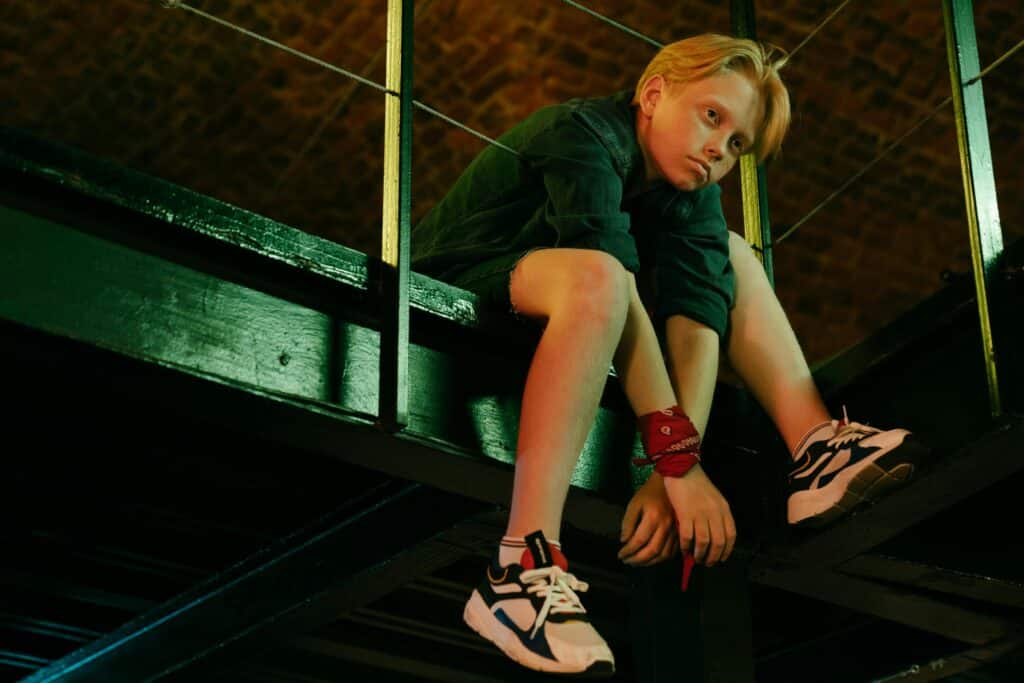
Understanding Adolescent Egocentrism and Its Impact on Learning and Social Development
rebekah
March 10, 2025
If you’ve spent any amount of time teaching teenagers, you know they’re in a league of their own. Their behavior can range from confident to unpredictable, and their view of the world seems a bit, well, self-centered.
What you’re observing is something psychologists call adolescent egocentrism.
Don’t worry—it’s not your imagination or a sign that the sky is falling. This is a normal (albeit sometimes challenging and hair-tearingly-frustrating) developmental stage that all teenagers go through.
Adolescent egocentrism plays a big role in shaping how teens see themselves, interact with others, and engage in their surroundings. While it’s a normal part of growing up, it does bring its fair share of difficulties, particularly in a classroom setting.
For teachers, understanding what’s actually going on in that adolescent brain can make all the difference. When you grasp the factors influencing egocentrism and its impact on behavior, you’re better equipped to help your students grow into socially aware and emotionally intelligent individuals.
Ready for some good news? you don’t need a psychology degree to crack the code of adolescent egocentrism. Together, we’ll break this concept down, look into what drives it, and figure out how to work with it in a classroom environment.
What Is Adolescent Egocentrism?

Adolescent egocentrism is a developmental phase in which teenagers have a difficult time perceiving the world from anyone else’s perspective. It’s not that they’re trying to be selfish or difficult.
Instead, their growing brains are preoccupied with their own experiences, thoughts, and emotions. During adolescence, they’re tasked with some heavy lifting—forming their identity, navigating new relationships, and breaking away from parental dependence.
There is ample research shedding light on the factors that shape adolescent egocentrism. For starters, puberty kicks emotions and self-awareness into high gear. With hormone changes come new feelings of self-consciousness about appearance and social status.
At the same time, teenagers develop advanced cognitive abilities like abstract thinking. This newfound mental agility leads them to analyze themselves (and everyone around them) in excruciating detail.
Then, there’s the push to figure out who they are. Teens start to shed some of their childlike ideas about the world as they seek independence from parental influences. This part of the process is messy and often confusing, but it helps them form a stronger sense of self over time.
Combined, these factors create the perfect storm for egocentric behavior. While it may manifest as a series of quirky “me-first” moments, understanding the psychology behind this behavior can help you develop a more empathetic view.
How Does Adolescent Egocentrism Affect Behavior?

Now that you know what causes adolescent egocentrism, what are some signs to watch out for that might indicate it’s at play?
Increased Self-Consciousness
Has a student ever refused to participate in class because they were afraid everyone would “judge them”? That’s likely the self-consciousness talking.
Adolescents tend to believe they’re always being scrutinized, leading them to overanalyze their every move. It’s not unusual for them to feel as though every word, action, or outfit choice is under a metaphorical microscope—even when nobody else notices.
Exaggerated Reactions
If a student bursts into tears over what seems like the smallest issue, don’t assume they’re being dramatic. Teens’ emotions are influenced by their egocentrism, making minor issues feel massive. Something as ordinary as a whispered conversation between classmates can suddenly seem like personal gossip.
Belief in Unique Experiences
This is where the concept of the “personal fable” comes into play. Many teenagers believe their life experiences are so unique that nobody could possibly understand them.
Ever hear a student say things like, “You just don’t get it!” or “That could only happen to me!”? That’s the personal fable in action—which can add an extra layer of frustration when you’re trying to relate to them.
Risky Behaviors
Feelings of invincibility (“That could never happen to me!”) are another hallmark of this developmental phase. Teens often underestimate risks and consequences, whether it’s skipping assignments, leaving class early, or putting themselves in unsafe situations outside of school.
Imaginary Audience
Adolescents often behave as though they have an audience watching their every move. This imaginary audience makes even the smallest mistake feel mortifying. Classroom moments like dropping a pencil or mispronouncing a word can feel embarrassing enough to ruin their day.
Difficulty Considering Other Points of View
Empathy takes a backseat when egocentrism drives. Teens often struggle to see beyond their own perspective, making group work and social interactions a bit tricky to manage. They’re not intentionally inconsiderate—they’re just trying to fumble their way through this murky stage of mental development.
How Do You Treat Adolescent Egocentrism?

The short answer? You don’t “treat” it—because it’s not a condition that needs fixing. Instead, your focus should be on managing it and helping students work through it as they grow.
Over time, this phase will naturally wane, but there are strategies you can use to make the classroom a bit more harmonious for now.
Empathize and Connect
Try to understand where your students are coming from—it’s not easy being a teenager! A little empathy can go a long way in building trust, so take time to ask how they’re feeling and genuinely listen.
Celebrate Wins and Strengths
Be sure to acknowledge students’ achievements and talents, no matter how small. Whether it’s getting through a tough assignment or showing kindness to a peer, recognizing their strengths helps boost their self-esteem.
Challenge Negative Thoughts
Encourage students to question their self-critical or overdramatic thinking. Ask them, “Do you really think everyone noticed?” or “What’s the worst that could happen?” This not only calms them down but also teaches them to think critically about their emotions.
Use Role-Playing and Social Stories
Sometimes, role-playing scenarios or sharing relatable stories can help teens see different perspectives. Acting out hypothetical situations—like resolving conflicts or handling embarrassment—makes abstract concepts more tangible.
Broaden Their Perspectives
By exposing students to new experiences or ideas, you broaden their horizons. This could mean inviting guest speakers, introducing literature with diverse viewpoints, or organizing group discussions where they hear perspectives from their peers.
Listen Without Arguing or Judging
Teens pick up on judgment faster than you might think. When they come to you with concerns or rants, be that safe space without pushing your critique. This doesn’t mean you have to agree—it just means letting them know they’ve been heard.
Adolescent Egocentrism is Temporary, but Transformative

Adolescent egocentrism may be temporary, but it plays a major role in shaping who your students become.
With understanding and a little patience (and some help from Stanfield Company) you can guide them through this phase and help them grow into thoughtful adults.


